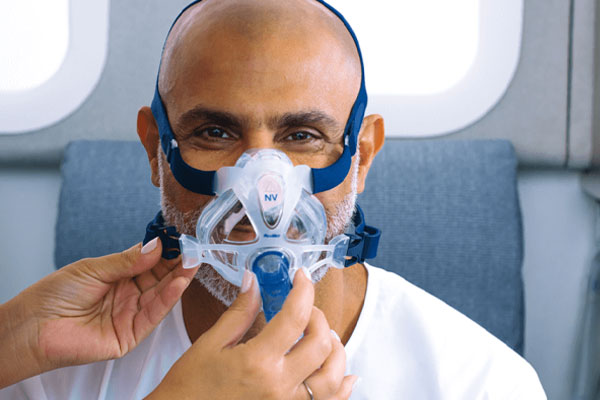Knowledge About Hyperbaric Oxygen Therapy
Hyperbaric Oxygen Therapy (HBOT) has garnered increased attention due to its wide array of therapeutic benefits. This medical treatment involves breathing pure oxygen in a pressurized chamber. Originally designed for decompression sickness and wound healing, hyperbaric oxygen therapy Dubai is now being evaluated for its potential in treating various conditions, from chronic infections to neurological impairments.
Hyperbaric oxygen therapy (HBOT) in Dubai offers a cutting-edge treatment option for various medical conditions, enhancing healing through increased oxygen delivery to tissues. Patients benefit from improved recovery times for injuries, enhanced wound healing, and relief from conditions such as decompression sickness and carbon monoxide poisoning. Many facilities in Dubai provide state-of-the-art chambers, ensuring a safe and comfortable experience under the supervision of trained professionals.
The effectiveness of HBOT in enhancing oxygen concentration in the blood promotes healing and recovery in various medical situations. By effectively delivering oxygen to tissues and organs that require it, HBOT helps accelerate the body’s natural healing processes. It is particularly popular among patients with chronic wounds, athletes needing quick recovery, and individuals seeking cognitive benefits.
The Science Behind HBOT
At its core, HBOT increases the amount of oxygen your blood can carry. The elevated pressure allows your lungs to collect more oxygen than would be possible under normal atmospheric conditions. This enhanced oxygen absorption triggers several physiological effects that expedite healing from injuries, counteract infection, and reduce inflammation. Essentially, more oxygen means more energy for cellular repair and regeneration.
Angiogenesis also known as the process of creating new blood vessels is greatly aided by the elevated oxygen levels. This guarantees a better supply of oxygen and nutrients, which expedites the healing process and is especially helpful for injured tissues. Furthermore, it has been discovered that HBOT stimulates stem cells, which help injured tissues and organs regenerate.
Medical Applications of HBOT
- Wound Healing: HBOT is highly effective in treating non-healing wounds, such as those associated with diabetes. Many patients with diabetic foot ulcers experience faster healing after undergoing HBOT sessions. By elevating oxygen supply to the affected area, HBOT helps in reducing infection risks and enhancing tissue regeneration.
- Infection Control: The treatment helps fight infections, including gas gangrene and necrotizing soft tissue infections. High oxygen concentrations can both increase the potency of antibiotics and be hazardous to some bacteria, providing a two-pronged approach to treating illnesses.
- Neurological Benefits: Emerging studies suggest benefits in cognitive function and traumatic brain injuries. For instance, patients who have suffered strokes or traumatic brain injuries may experience improved cognitive function and less neurological impairment after undergoing HBOT.
- Anti-Aging: Some research points to potential anti-aging effects, thanks to the therapy’s impact on telomere length and stem cell production. HBOT has demonstrated promise in lengthening telomeres, the protective caps on the ends of chromosomes, which may decelerate the aging process. Telomeres tend to shrink with age.
How HBOT Works: A Step-by-Step Guide
- Speak with a medical professional to find out if HBOT is right for your situation. Your condition and medical history will be evaluated by doctors to make sure you are a good fit for the therapy.
- Pre-treatment evaluation to assess your baseline health status. This may include blood tests, lung function tests, and imaging studies to gather comprehensive information about your physical condition.
- Entering the HBOT chamber, where the pressure is gradually increased to about two to three times the normal atmospheric pressure. This process is monitored closely by healthcare professionals to ensure a safe and comfortable experience.
- Breathing pure oxygen for a specified duration, usually between 60 to 90 minutes per session. The increased oxygen levels during this period aid in promoting healing and lowering inflammation all across the body.
- Gradual decompression to return to normal atmospheric conditions. This step is crucial to prevent complications such as decompression sickness. Patients are monitored closely during decompression to ensure their safety and well-being.
Real-Life Examples of HBOT Success
Miriam, a 54-year-old diabetic patient, experienced significant improvement in her non-healing foot ulcer after undergoing HBOT. Miriam had struggled with her wound for months, and traditional treatments had shown little effectiveness. After several sessions in a hyperbaric chamber, the healing accelerated, and the wound eventually closed, much to her relief.
Similarly, athletes like football players and divers use HBOT for recovery and performance enhancement. These athletes find that the therapy helps them recover more quickly from intense physical exertion and injuries, enabling them to return to their sport in better condition. The increased oxygen supply helps repair muscle damage and reduce inflammation, critical aspects of athletic recovery.
Conclusion
A treatment that shows promise and can help with a variety of diseases is hyperbaric oxygen therapy. From promoting wound healing to potentially enhancing cognitive function, the applications of HBOT are continually expanding. As ongoing research sheds more light on its benefits, HBOT could become a mainstay in various therapeutic practices, offering hope to patients with conditions that have resisted conventional treatments.
To find out if a treatment is right for you, always get advice from medical professionals. With thorough evaluation and proper administration, HBOT can be a safe and effective part of a broader medical strategy to promote healing and enhance quality of life.



